Modular Garden: An Expanding Pattern (2019)
The proposal of a hanging garden installation prompted this computationally-driven exploration. Iteration on a simple formal logic through digitally fabricated models led to an assembly of asymmetrical modules. This project was completed in CMU soa's Introduction to Computational Design seminar in collaboration with Jasmine Lee, Vivian Teng, and Adam He.

Contrasting squares and circles begin to speak to one another through careful play of negative space and light. Introduction of a smaller module to deviate from the regularity of the standard grid allowed for the differentiated aggregation of modules and variation in all directions.
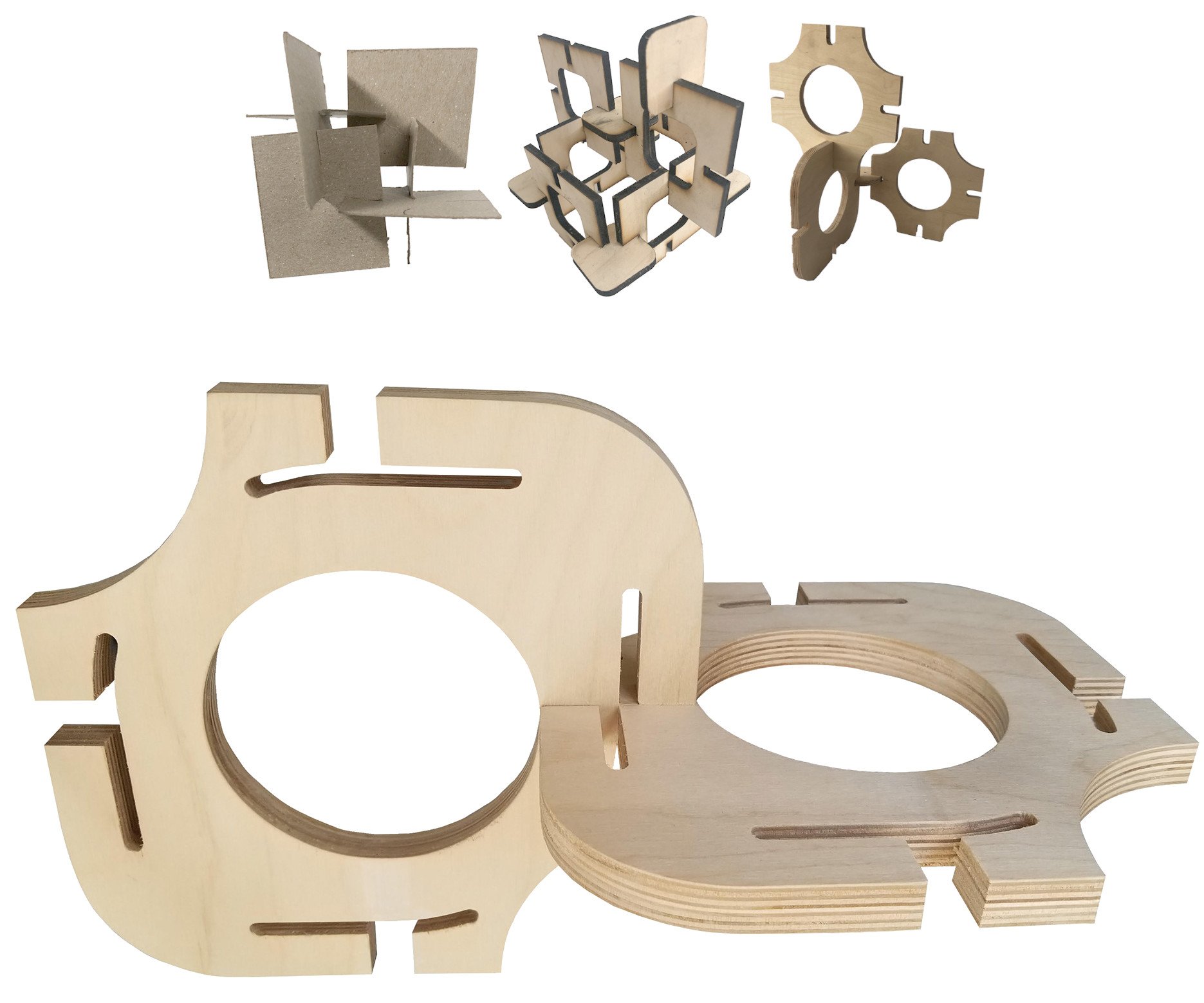
The module design led to the discovery of a secondary circular element, as shown in the cut sheet below. The interior portion of the main module was adapted into another element to the tessellating design. There was a missed opportunity for the main modules to be rotated to produce an additional circular element, a mistake the team learned from. This process-driven conceptualization allowed the project to save on material waste, a common obstacle in CNC manufacturing.
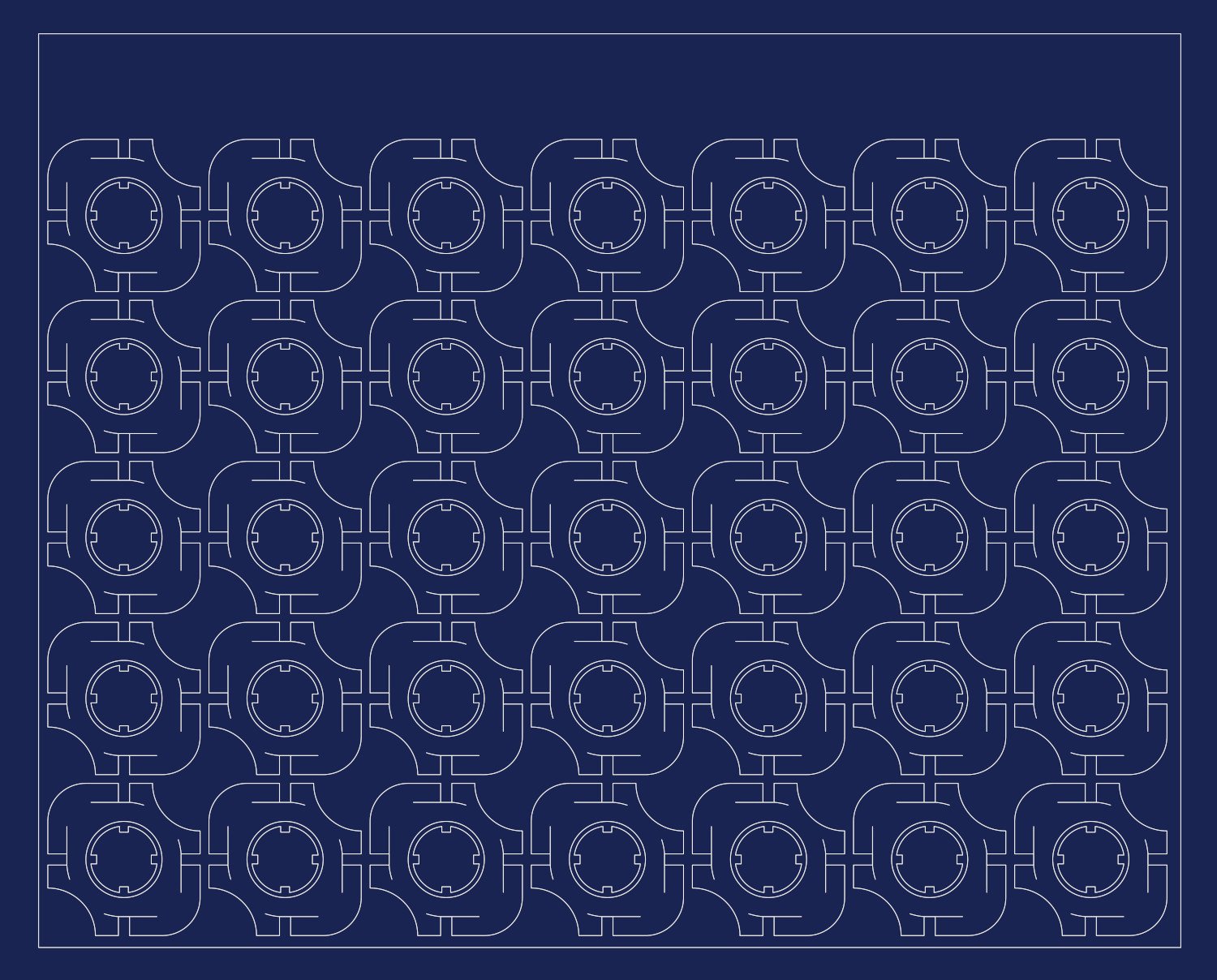

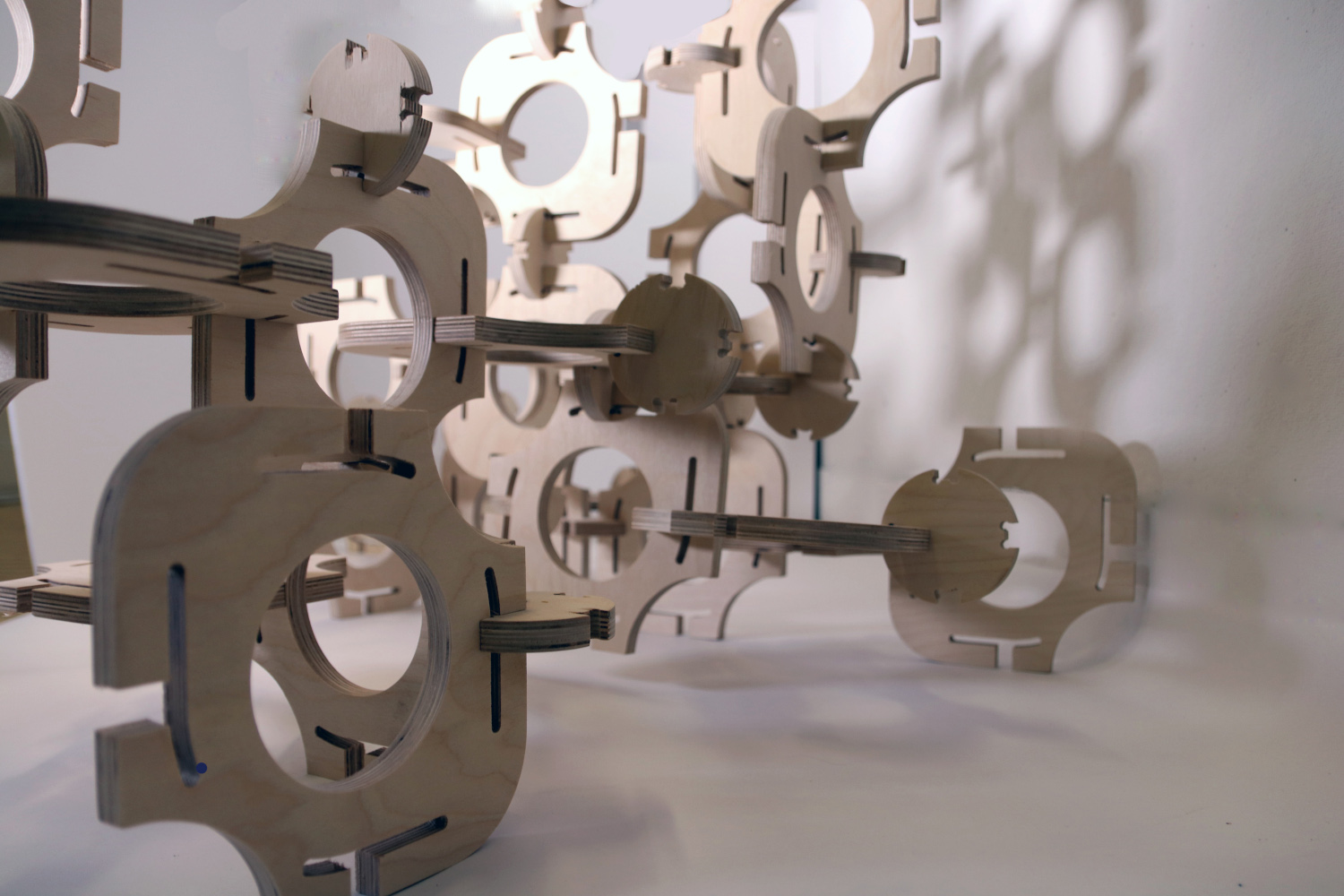 | 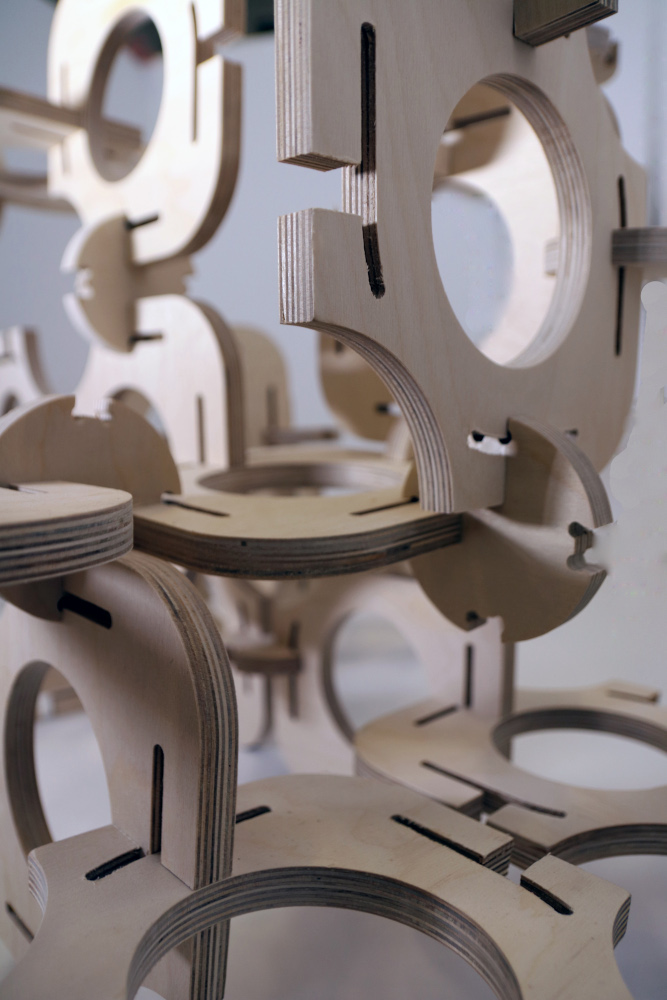 |


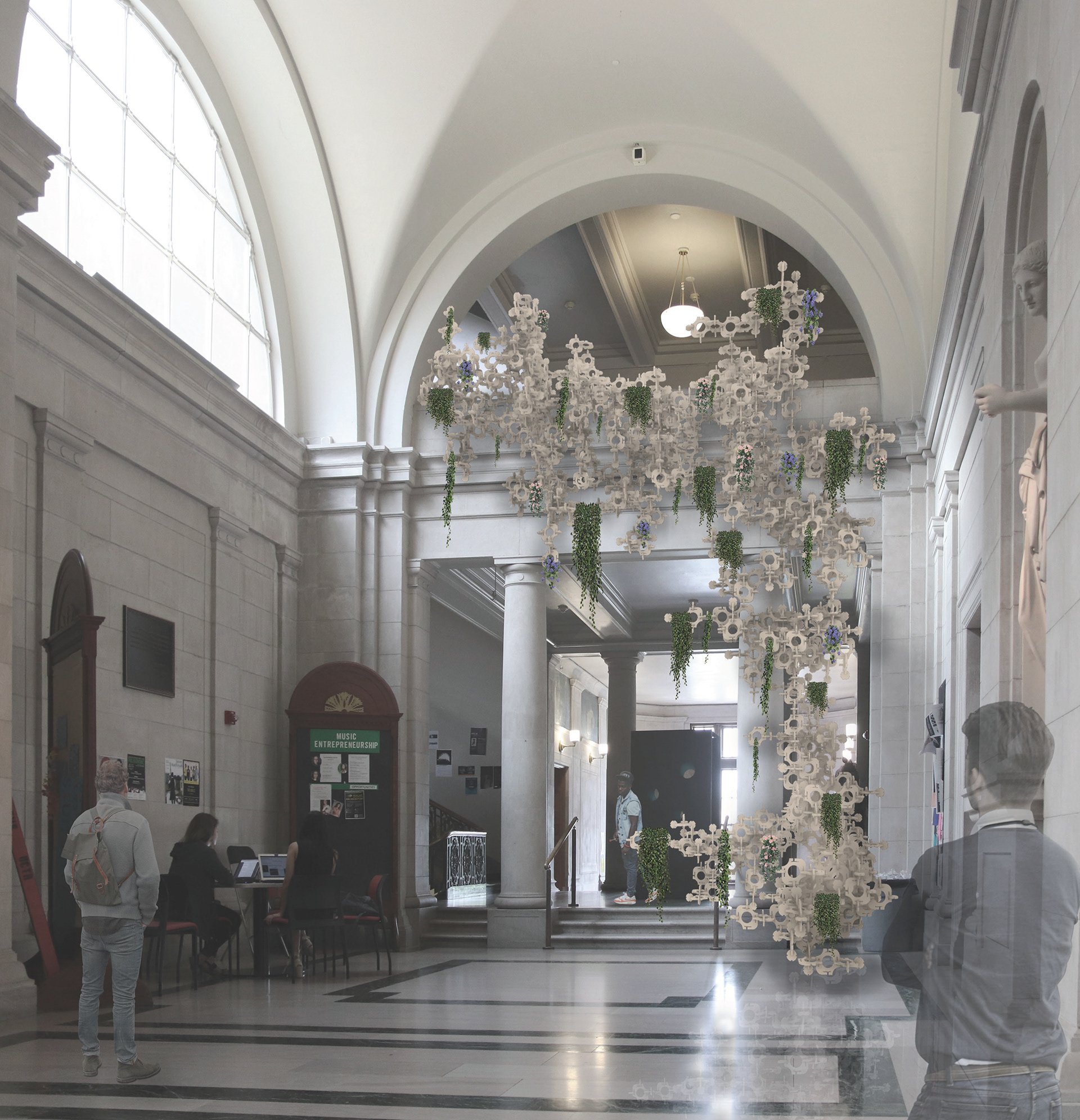
- 2025
- Primitive Slicer
- 2024
- Semantic Floor Plans
- ITECH Research Pavilion
- Wax Flamingos
- Phenomena Modeling
- 2023
- Honeycomb
- Water-QWOP
- Horse & Chariot
- Hyper-hydration
- 2022
- Sprawl & Resilience
- 2021
- Cybernetic Field
- Bubble-GAN
- 2020
- ELC: Carrick
- 15-112: placeHolder
- Collaborative Winding
- 2019
- Flood Museum
- Design Fabrication
- Spring Garden Hostel
- Modular Garden
- Bathhouse
- 2018
- Hoophouse
- Drawings